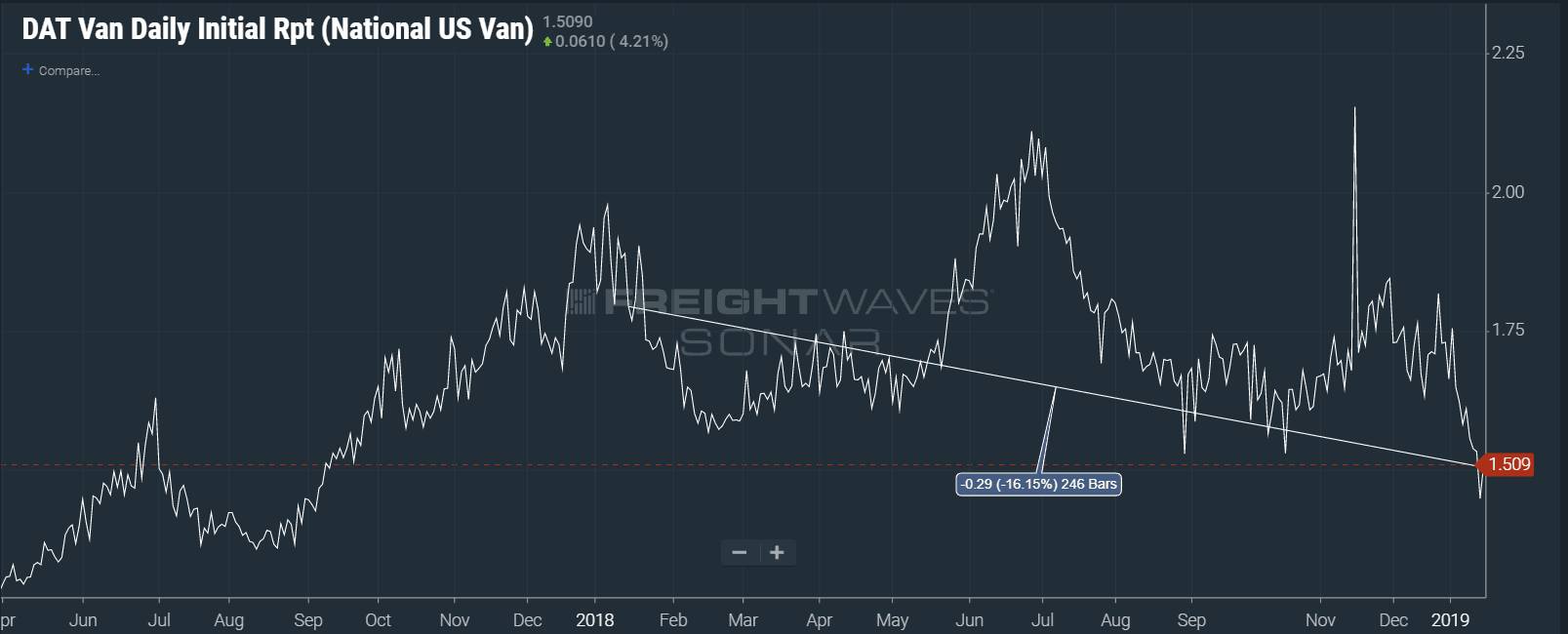Watching freight market volume is currently like watching a leaf falling from a high branch on a tree. It falls slowly, getting caught on another leafy branch every now and then before dropping a little more. Capacity is increasing in a similar fashion. The question we keep asking ourselves is have we hit the bottom in terms of activity?
There are conflicting signals at the moment. The national tender volume index has fallen 3.5% over the past seven days with 2.9% of the drop occurring in a single day. The Monday decline was the largest non-holiday related single day drop since March of last year. Since the drop, volume stabilized inching back up about 0.3%.

Freight volume dropping in mid-January is not uncommon, but last January the market was much different. The DAT Van Freight Index on January 15th last year was $1.79, and this year it is sitting around $1.51, indicating the market is much less volatile than it was a year ago. The DAT Freight Index measures national spot market rates, so a lower value is an indication that capacity is higher than this time a year ago.
Year-over-year capacity has increased, but over the past week there has been a slight uptick in the National Tender Rejection Index (OTRI), moving from 8.32% to 8.43%, indicating that capacity actually decreased slightly. Interestingly, dropping volume did not have a significant impact on capacity. Normally, one would assume decreasing volume increases capacity as there is less freight for the same amount of trucks. This assumption ignores the fact trucks are not always available in the areas they are needed. Sustained lower volumes over time will certainly increase capacity as carriers will gravitate to the freight, but volume and capacity do not always move in lock-step.
The Midwest has been the “warm” spot in the U.S. over the past week with tender rejections increasing in the nation’s icebox in the Eau Claire, Wisconsin and Minneapolis markets. Eau Claire outbound tender rejection rates increased 298 bps over the past week while the larger Minneapolis market climbed 190 bps to 15.42%.
The Midwest’s unofficial hub of freight, Chicago, has been relatively quiet with tender rejections falling slightly over the past seven days, but does remain the hardest of the top 5 markets by volume to find capacity with a tender rejection rate above 9%. Volume also increased 2.6% out of the Joliet market which is the larger of the two Chicago freight markets, representing roughly 3% of the total U.S. freight volume versus Chicago’s 1.89%.
It is the end of the month next week so volume should increase slightly, but should remain on par with early winter norms. Chinese New Year looms on the horizon, starting on February 6th so we will remain vigilant to see if there is any significant impact as the tariff situation gets ironed out. Some good news came out of the talks earlier this week when China floated a proposal to purchase American wheat again, so there is some hope for a resolution by the first of March.










